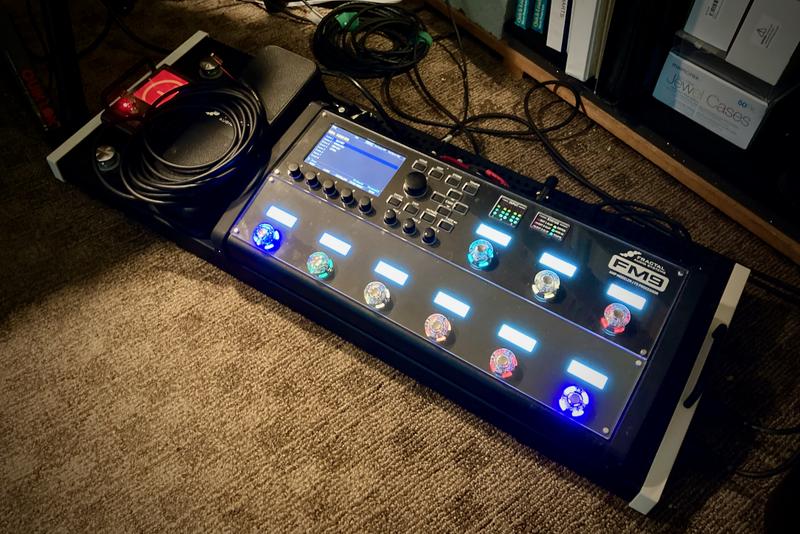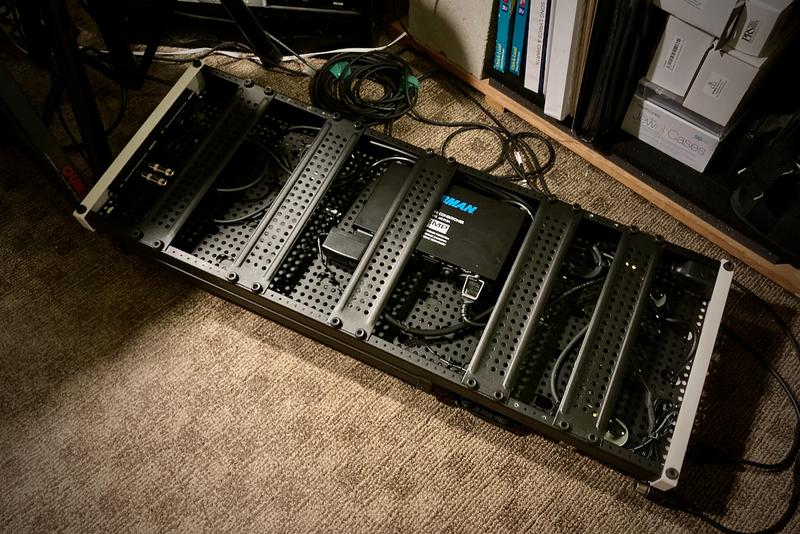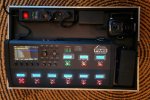Ok, for real now:
View attachment 92179
This is a dry run of the 2 sections inside my Pelican Vault case (for which I've not yet cut the foam).
Here is the bottom view of the FM9.
I've got a Voodoo Lab Pedal Power 2 being fed by a Temple IEC module. That powers the FM9 and the Audiofront Expression IO that's used for passing expression pedal input via midi to the FM9. The expression pedals are fed thru Temple passthru modules from the other board.
There are 3 momentary normally closed switches wired directly to TS jacks with bare 14g wire (from Romex - great idea from
@Joe Bfstplk!) that are cabled to the FM9 with George Ls cables.
There are also 2 USB passthru modules for connecting my computer to the FM9 and Expression IO.
The Pedal Power 2 and Expression IO are attached with small Temple mounting plates. Everything else is directly thru the board:
View attachment 92181
And the expression pedal board:
View attachment 92184
Note that I relocated the input jacks on the 2 middle pedals to make 4 fit on the board:
View attachment 92182
Here's the other variation for the scenario that I decide to use my Axe Fx III - just swap the FM9 board for the FC-12 board.
This one is simpler - only the passthru module for feeding expression pedals into the FC-12:
View attachment 92180







